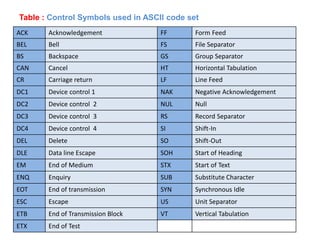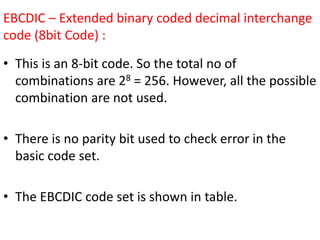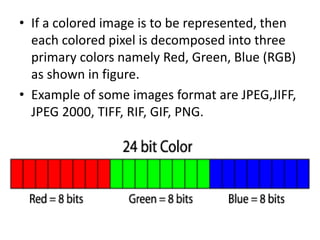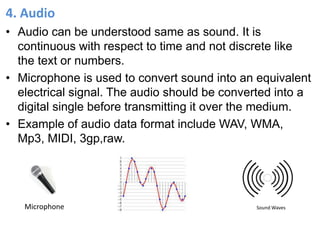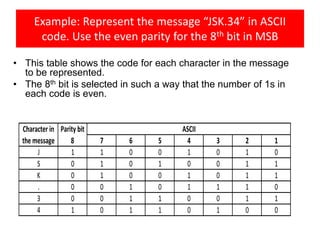The document provides a comprehensive overview of data communication, focusing on various data types such as text, numbers, images, audio, and video. It explains the different encoding methods for representing data, including ASCII, EBCDIC, and Unicode, and discusses the significance of bits in data representation. Additionally, the document addresses the need for error-checking mechanisms like parity bits and outlines the importance of converting data into suitable formats for transmission.
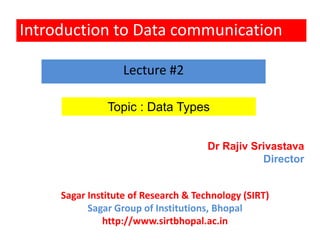

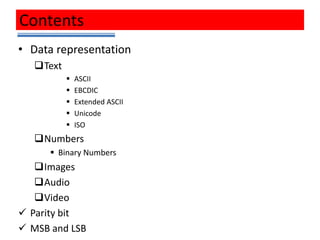
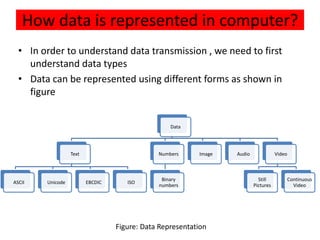

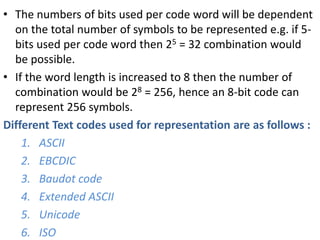

![Bit 7
Numbers 6
5
4321
0 0 0 0 1 1 1 1
0 0 1 1 0 0 1 1
0 1 0 1 0 1 0 1
0 1 2 3 4 5 6 7
0000 0 NUL DLE SPACE 0 @ P p
0001 1 SOH DC1 ! 1 A Q a q
0010 2 STX DC2 2 B R b r
0011 3 ETX DC3 # 3 C S c s
0100 4 EOT DC4 $ 4 D T d t
0101 5 ENO NAK % 5 E U e u
0110 6 ACK SYN & 6 F V f v
0111 7 BEL ETB ‘ 7 G W g w
1000 8 BS CAN ( 8 H X h x
1001 9 HT EM ) 9 I Y i y
1010 A LF SUB * : J Z j z
1011 B VT ESC + ; K [ k {
1100 C FF FS , < L l |
1101 D CR GS - = M ] m }
1110 E SO RS > N ^ n ~
1111 F SI US / ? O __ o DEL
Figure: ASCII Table](https://image.slidesharecdn.com/2lecture2datatypes-170821053645/85/Data-Communication-Computer-Networks-Data-Types-8-320.jpg)
